Imperial Yacht Standardt - Big View of the Yacht
from a 1896 British Magazine
Not the best quality, but a valuable view from 1896. Here's the text from the article, the magazine is unidentified:
THE RUSSIAN IMPERIAL YACHT " STANDART."
We give this week, on pages 175, l78, and 183 some further illustrations of the fine yacht built by Messrs. Burmeister and Wain, of Copenhagen, for the Czar of Russia, and of which we published other drawings, together with a description, in our issue of January 28 last. The graceful appearance of the boat is well shown by Fig. 18, page 183, which represents the Standart at anchor. As will be seen from this engraving, she is rigged as a three-masted fore-and-aft schooner. The great size of the funnels, which is a necessary accom paniment of the great boiler power fitted, makes the boat, perhaps, appear rather smaller than she actually is; but the steam launch shown in the foreground serves to correct this impression, and to convey a truer idea of her real proportions, her displacement being 5255 tons. We have already published illustrations of the Emperor's deck cabin and sitting-room, the dining saloon, and the upper deck; we now add (Figs. 14 to 17, page 175) views of the sitting-rooms provided for the Empress and Dowager-Empress, of the church, and of the officers' mess. The engines are shown in Fig. 10, page 178. They are of the twin-screw triple-expan sion type, with cylinders 41 1/8 in., 65 1/8 in., and 105 1/8 in. in diameter by 54 in. stroke. The low-pressure cy linders are fitted with double-ported Trick slide valves, balanced by means of relief rings at the hack; whilst the high-pressure and intermediate cylinders have piston valves. In the case of the latter cylinder the valves are double, both spindles, however, being con nected to a single crosshead. Steam reversing and turning gears are provided, the former having an all round motion. The engines take their steam at a pres sure of 165lbs per square inch from a battery of 24 Belleville boilers working at a pressure of 245 lb. per square inch, the steam being passed through reducing valves before reaching the engine stop-valves. The crankshaft is hollow, the external diameter being 171 in. and 18 in., and internal diameter 8 in. The main condensers are cast in one with the hack columns of the low-pressure and intermediate cylinders, the circulating water heing supplied by means of two independently-driven centrifugal pumps. On trial the engines have given an average of 12,000 horse-power for a period of 12 hours, the corresponding speed on the run being 21.5 knots.





 Imperial Bedroom
Imperial Bedroom Portrait Hall
Portrait Hall Mauve Room
Mauve Room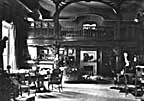 Maple Room
Maple Room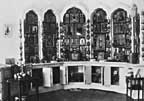 Aleksey's Bedroom
Aleksey's Bedroom Nicholas's Study
Nicholas's Study Aleksey's Playroom
Aleksey's Playroom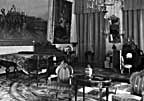 Formal Reception
Formal Reception Balcony View
Balcony View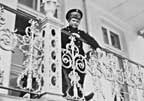 Aleksey- Balcony
Aleksey- Balcony Children-Mauve
Children-Mauve Nicholas's Bathroom
Nicholas's Bathroom Alexandra- Mauve
Alexandra- Mauve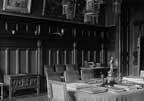 Nicholas's Reception
Nicholas's Reception Tsarskoe Selo Map
Tsarskoe Selo Map